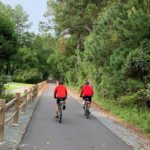
Georgetown-Lewes Trail
This popular trail near Lewes Delaware provides walkers, bikers, dog walkers and families the opportunity to enjoy time together outside.
Designated a National Scenic Byway in February 2021 for its rich history, the Delaware Bayshore Byway is the “Road Less Traveled”. Driving it, you are welcomed to “Delaware’s quieter and wilder side”, a destination unto itself. Traveling the Byway is about making a conscious decision to get off the crowded, bustling highway of modern America, letting your senses take in the majesty and power of Mother Nature in the wildlife areas and coastal communities of Delaware’s Bayshore.
The Bayshore area is a natural treasure in the middle of the heavily populated Mid-Atlantic corridor. With more than 30 million people living within a three-hour drive, the Bayshore provides low-impact access to a premier natural and historic destination.
This page will provide you with key information and facts about the byway. For more comprehensive information and drive itineraries, visit the Delaware Bayshore Byway dedicated website at: https://delawarebayshorebyway.org/
The southern portion of the Byway is a continuation of Delaware’s unique coastal landscapes: small historic coastal
towns and communities surrounded by water, marsh and farmland, anchored inland by the thriving historic towns of
Magnolia, Frederica, Milford and Milton. Residents and visitors alike are drawn to immerse themselves in this marriage of nature and history.
The Bayshore is widely recognized as an area of global ecological and historic significance. It is a Migratory Shorebird Site of Hemispheric Importance, a Wetland of International Significance, and an Important Bird Area of Global Significance.
Additionally, the Delaware Bay is home to several horseshoe crab sanctuaries and the largest concentration of horseshoe
crabs in the world (between 25-30 million adults.)
Its expansive coastal marshes, sandy shorelines, forests, fields, and agricultural lands provide habitat for more than 400 species of birds and other wildlife. The Nature Conservancy and the National Audubon Society recognize the region as a globally-significant wildlife habitat. The Nature Conservancy has called the Bayshore “one of the Earth’s most important stopovers for migratory birds.”
The small towns along the Bayshore enjoy a deep and rich heritage, evolving from early colonial settlements and centers
for maritime industries that thrived on the abundant natural resources of the area.
Today, more than 115,000 acres of the Bayshore are protected as state wildlife areas, state parks, national wildlife refuges, national estuarine research reserves, private conservation lands, agricultural preserves, and cultural heritage sites.
In 2012, the State, led by the Delaware Department of Natural Resources and Environmental Control, federal agencies, non-profit conservation organizations, and local Bayshore communities launched the Delaware Bayshore Initiative, under then President Obama’s Great Outdoor Initiative, to promote habitat conservation and restoration, enhance and improve outdoor recreation access and opportunities, and strengthen local Bayshore community economies.
View planned trips based on your interests! Whether you want to experience the Byway's culture, history, nature, recreation, or beautiful scenery, there's a route for you to follow! No need to drive in circles wasting gas! Each itinerary provides you with key attractions, byway location map, directions and informative links.
View the Delaware Bayshore Byway Trips
Get a preview of the scenery, wildlife, culture and history you’ll experience when your travel the Delaware Bayshore Byway.
We are the fields, marshes, rivers and beaches of the Delaware Bayshore, stretching 100 miles along one of the richest and most biodiverse regions in the nation.
We are the stories of the birth of this nation, the creation of the First State, the ratification of independence and the protection of our freedom.
We are the tales of forts, firetowers and floating cabins. Where crabbing is a way of life, birding can be a daily escape, hiking comes naturally, and the water beckons for you to explore its many meanderings.
We are wildlife refuges, walking trails, biking paths and a National Park. We are the absolute opposite of beach traffic.
We invite you to explore this amazing path.
We encourage you to get lost in our past.
We are excited for you to discover our hidden gems.
We are the Delaware Bayshore –
All American, All Natural
 Step back in time and experience the charm and beauty of colonial New Castle. Walk the cobblestone streets and enjoy the historic sites of this riverfront community. Overlooking the Delaware River, Historic New Castle is the oldest continuously occupied town in the Delaware Valley and this community remains one of the most important Colonial/Federal villages in America.
https://newcastlecity.delaware.gov/
Step back in time and experience the charm and beauty of colonial New Castle. Walk the cobblestone streets and enjoy the historic sites of this riverfront community. Overlooking the Delaware River, Historic New Castle is the oldest continuously occupied town in the Delaware Valley and this community remains one of the most important Colonial/Federal villages in America.
https://newcastlecity.delaware.gov/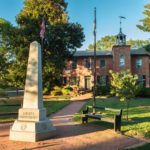 Welcome to the tranquil village of Odessa, in colonial times, a busy grain shipping port known as Cantwell’s Bridge. Stroll the tree-lined streets, tour the beautifully restored 18th and 19th-century houses, wander through picturesque gardens and dine at the historic Cantwell’s Tavern, welcoming guests just as it did nearly 200 years ago.
Welcome to the tranquil village of Odessa, in colonial times, a busy grain shipping port known as Cantwell’s Bridge. Stroll the tree-lined streets, tour the beautifully restored 18th and 19th-century houses, wander through picturesque gardens and dine at the historic Cantwell’s Tavern, welcoming guests just as it did nearly 200 years ago.
 Cedar Swamp Wildlife Area consists of four large land tracts totaling over 5,500 acres of wilderness near Townsend and the mouth of Delaware Bay. Cedar Swamp State Wildlife Management Area is a treat especially for the adventure seekers. The area is also used for hunting and camping.
https://arcg.is/0HKiSr
Cedar Swamp Wildlife Area consists of four large land tracts totaling over 5,500 acres of wilderness near Townsend and the mouth of Delaware Bay. Cedar Swamp State Wildlife Management Area is a treat especially for the adventure seekers. The area is also used for hunting and camping.
https://arcg.is/0HKiSr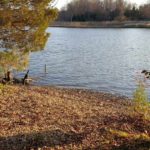 The Blackbird Creek Reserve is located upstream from Delaware Route 9 at Taylors Bridge in Townsend and includes trails, pavilion and canoe/kayak launch.
The Blackbird Creek Reserve is located upstream from Delaware Route 9 at Taylors Bridge in Townsend and includes trails, pavilion and canoe/kayak launch.
https://dnrec.alpha.delaware.gov/coastal-programs/research-reserve/blackbird-creek/
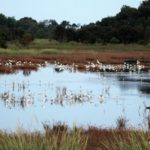 Bombay Hook National Wildlife Refuge protects one of the largest remaining expanses of tidal salt marsh in the mid-Atlantic region. It is mostly marsh, but also includes freshwater impoundments and upland habitats. It is a nationally recognized birding spot attracting birders from across the country.
Bombay Hook National Wildlife Refuge protects one of the largest remaining expanses of tidal salt marsh in the mid-Atlantic region. It is mostly marsh, but also includes freshwater impoundments and upland habitats. It is a nationally recognized birding spot attracting birders from across the country.
 A verdant rural community, Leipsic was first home to a thriving farming economy in Delaware that included trapping, oystering, fishing and canning. Leipsic’s relaxed location by the water has helped the town become a popular spot for fishermen and crabbers, and a quintessential spot for quiet living along the water.
A verdant rural community, Leipsic was first home to a thriving farming economy in Delaware that included trapping, oystering, fishing and canning. Leipsic’s relaxed location by the water has helped the town become a popular spot for fishermen and crabbers, and a quintessential spot for quiet living along the water.
 The Town of Little Creek is a charming Bayshore town with an interesting history while offering the potential for traveler services. The Town of Little Creek, settled in the early 1800’s, allegedly was first inhabited by pirates. Originally called Little Landing, the town was most prosperous in the late 1800’s when a thriving oyster industry emerged.
https://littlecreek.delaware.gov/
The Town of Little Creek is a charming Bayshore town with an interesting history while offering the potential for traveler services. The Town of Little Creek, settled in the early 1800’s, allegedly was first inhabited by pirates. Originally called Little Landing, the town was most prosperous in the late 1800’s when a thriving oyster industry emerged.
https://littlecreek.delaware.gov/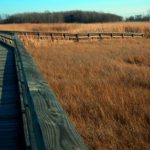 The St. Jones Reserve is located in Kent County and includes a portion of Delaware Bay. It includes a Visitor Center and a two-mile nature trail with a quarter-mile boardwalk over the salt marsh that connects the Reserve with the adjacent Ted Harvey Wildlife Management Area.
https://dnrec.alpha.delaware.gov/coastal-programs/research-reserve/st-jones/
The St. Jones Reserve is located in Kent County and includes a portion of Delaware Bay. It includes a Visitor Center and a two-mile nature trail with a quarter-mile boardwalk over the salt marsh that connects the Reserve with the adjacent Ted Harvey Wildlife Management Area.
https://dnrec.alpha.delaware.gov/coastal-programs/research-reserve/st-jones/ As the St. Jones River and the Murderkill River both meander their way to the Delaware Bay, nestled between them is Bowers Beach. Once one of the premier fishing towns on the Delaware Bay, this town has continued to endear itself to many residents who come to fish and swim, to bird watch, to kayak and sail, to paint, and to stroll the beaches looking for treasures.
As the St. Jones River and the Murderkill River both meander their way to the Delaware Bay, nestled between them is Bowers Beach. Once one of the premier fishing towns on the Delaware Bay, this town has continued to endear itself to many residents who come to fish and swim, to bird watch, to kayak and sail, to paint, and to stroll the beaches looking for treasures.
 Town of Frederica is approximately six miles from the Delaware Bay shore. The town’s location among wetlands leads to the nickname “Frogtown” because of the large number of frogs that made the area their home. The nickname has stuck into the present day and is depicted on the trucks of the Frederica Volunteer Fire Company. These geographic factors gave rise to the shipping and shipbuilding activities that dominated the town’s economy. Protected from change brought about in other parts of the county, Frederica offers a rare look at one of Kent Count’s earliest water based economies.
Town of Frederica is approximately six miles from the Delaware Bay shore. The town’s location among wetlands leads to the nickname “Frogtown” because of the large number of frogs that made the area their home. The nickname has stuck into the present day and is depicted on the trucks of the Frederica Volunteer Fire Company. These geographic factors gave rise to the shipping and shipbuilding activities that dominated the town’s economy. Protected from change brought about in other parts of the county, Frederica offers a rare look at one of Kent Count’s earliest water based economies.
 Big Stone Beach is a very quiet beach surrounded by freshwater marshes. The metal observation tower at Big Stone Beach was one of five constructed in Delaware between World wars I and II to reinforce nearby Fort Saulsbury.
Big Stone Beach is a very quiet beach surrounded by freshwater marshes. The metal observation tower at Big Stone Beach was one of five constructed in Delaware between World wars I and II to reinforce nearby Fort Saulsbury.
https://archives.delaware.gov/historical-markers-map/big-stone-beach/
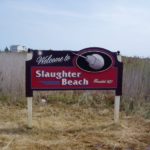 Slaughter Beach in the early years was primarily a resort for Milford area residents during the summer months. You’ll find fine, white sand and sparkling water and it serves as a horseshoe crab sanctuary – in May and June, hundreds of thousands of these prehistoric creatures come to Slaughter Beach to spawn.
Slaughter Beach in the early years was primarily a resort for Milford area residents during the summer months. You’ll find fine, white sand and sparkling water and it serves as a horseshoe crab sanctuary – in May and June, hundreds of thousands of these prehistoric creatures come to Slaughter Beach to spawn.
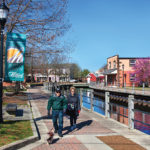 Milford’s historic downtown has become a renewed center of community life hosting upmarket boutiques, art galleries, restaurants and a community theatre. Downtown Milford is host to several regional events each year including the Riverwalk Freedom Festival and the Bug & Bud Festival. Residents and visitors alike can enjoy the natural resource as they walk, bike or run along the Mispillion Riverwalk, a series of pedestrian and bicycle paths that hug the banks of the Mispillion River.
Milford’s historic downtown has become a renewed center of community life hosting upmarket boutiques, art galleries, restaurants and a community theatre. Downtown Milford is host to several regional events each year including the Riverwalk Freedom Festival and the Bug & Bud Festival. Residents and visitors alike can enjoy the natural resource as they walk, bike or run along the Mispillion Riverwalk, a series of pedestrian and bicycle paths that hug the banks of the Mispillion River.
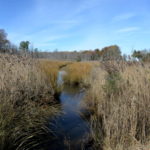 Milford Neck’s landscape can be described as a mosaic of undeveloped beaches and dunes, shifting shorelines, vast tidal marshes, island hammocks, swamp, upland forests and open farmland. Among its attractions is a 350-acre open space for training hunting dogs. Milford Neck offers prime habitat for more than a million migratory shorebirds.
Milford Neck’s landscape can be described as a mosaic of undeveloped beaches and dunes, shifting shorelines, vast tidal marshes, island hammocks, swamp, upland forests and open farmland. Among its attractions is a 350-acre open space for training hunting dogs. Milford Neck offers prime habitat for more than a million migratory shorebirds.
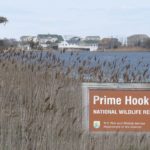 The refuge is an important stopover site for migratory birds and provides protected breeding habitat for threatened and endangered species, as well as many neo-tropical migrating bird species. Prime Hook’s habitat features include salt marsh, freshwater marsh, ponds and impoundments, wooded swamps and upland grasslands and forest.
The refuge is an important stopover site for migratory birds and provides protected breeding habitat for threatened and endangered species, as well as many neo-tropical migrating bird species. Prime Hook’s habitat features include salt marsh, freshwater marsh, ponds and impoundments, wooded swamps and upland grasslands and forest.
 Broadkill Beach offers direct waterfront beach access to the Delaware Bay for swimming, kayaking, stand-up paddleboard, surf fishing, and other water-oriented activities.
Broadkill Beach offers direct waterfront beach access to the Delaware Bay for swimming, kayaking, stand-up paddleboard, surf fishing, and other water-oriented activities.
The community borders the Prime Hook National Wildlife Refuge, making it a haven for nature lovers and bird watchers in addition to other wildlife.
 Milton is one of the little old Delaware towns that prospered through shipbuilding and shipping in the 19 century. The business section displays the now-rare lower Delaware permanent store awnings and the old part of the town contains many old cypress-shingled houses characteristic of eastern Sussex County.
https://milton.delaware.gov/
Milton is one of the little old Delaware towns that prospered through shipbuilding and shipping in the 19 century. The business section displays the now-rare lower Delaware permanent store awnings and the old part of the town contains many old cypress-shingled houses characteristic of eastern Sussex County.
https://milton.delaware.gov/
This popular trail near Lewes Delaware provides walkers, bikers, dog walkers and families the opportunity to enjoy time together outside.
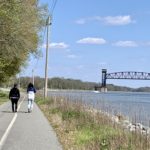
The Michael N. Castle Trail is a running, walking and biking trail that runs through a lovely wildlife preserve along the north side of the C&D Canal.
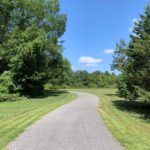
An out and back asphalt river trail designed for walking and biking. The trail runs alongside the St. Jones River near Dover, Delaware
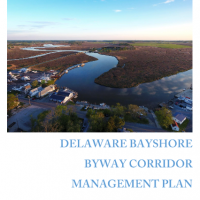

View the rolling hills of the Brandywine Valley and many historical and cultural sites.
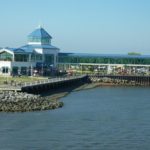
A continuous road network that, taken as a whole, captures the remarkable 390 year modern history of the greater Lewes area.
About Delaware Greenways:
We envision a State where trails, pathways and scenic corridors connect everyone to where they want to go, empowering them to live healthier lives as they discover and enjoy the outdoors.